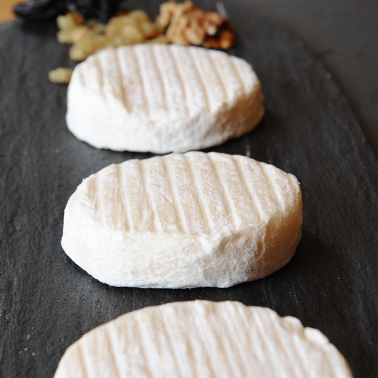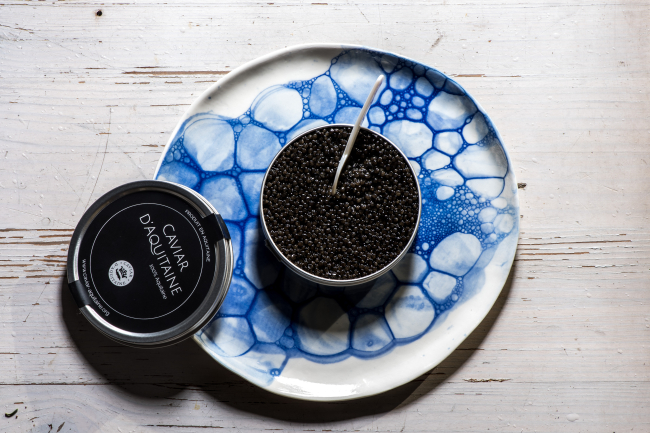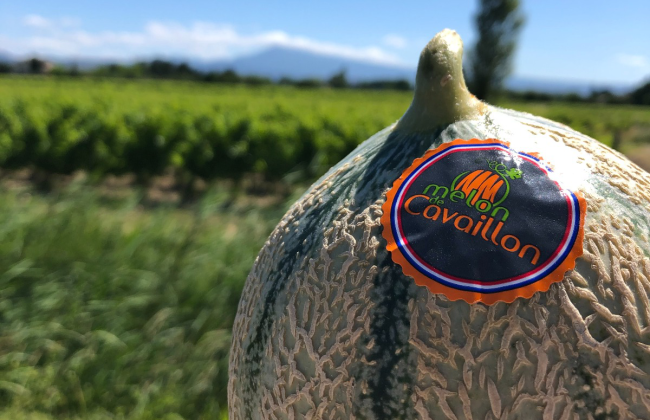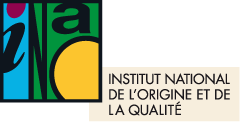A historical legacy
"Pérail" was originally made on the farm mainly by women, at the end of the ewes' lactation, when producers stopped delivering milk to the "Roquefort" cheese dairies and the latter distributed the leftover rennet to them.
This tradition, together with the small amount of milk available and draining in the small space of the "peralhièira" (the stone sink that gave rise to the name "Pérail"), led to a small cheese, made using a mixed technology with the addition of lactic ferments and rennet.
This cheese can be traced back to the end of the 19th century. Now made all year round, on the farm or in the dairy, "Pérail" hides behind its fine, slightly felted skin a melting, creamy paste. It develops milky, sheep's wool scents and fresh, sweet aromatic notes.

A production rooted in its region
The "Pérail" comes from a semi-mountainous area of plateaus cut by deep valleys and gorges in the southwest of the Massif Central. It is here, in the confrontation between mountain and Mediterranean climates, that local Lacaune breed ewes find an aromatic and diverse flora to give a milk rich in fat, used whole, which will be used to make "Pérail".
The ewes' diet is based for the most part on the resources of the PGI geographical area: pastures, temporary and permanent meadows, forage and complementary feed. It favors a dominant grazing system with access to pastures in direct proximity to the sheepfold, and in areas with the poorest soils, grazing of rangelands that offer diverse vegetation and floral multiplicity.
A lasting commitment
"Pérail" production respects animal welfare (access to pasture, straw-bedded area in the sheepfold with hay in the ration).
It contributes to the preservation of biodiversity and the environment: use of a local breed, non-GMO feed sourced at least 70% from the PGI geographical area, excluding palm-derived products, compulsory grazing associated with a minimum area per ewe, cultivation of forage legumes, soil cover in winter.
Economic data
958 exploitations
engagées dans la production du lait
200 personnes
travaillent à l’élaboration du Pérail dans 13 ateliers de fabrication
964 tonnes
produites annuellement
About the Protected Geographical Indication (PGI)
PGI is linked to know-how. It identifies an agricultural product, raw or processed, whose quality, reputation or other characteristics are linked to its geographical origin. At least one stage in the production, processing or elaboration of this product must take place in the delimited geographical area. The PGI guarantees protection for the product at both national and European level. Compliance with PGI specifications is regularly monitored by independent bodies accredited and supervised by the State.
.The latest approvals for French SIQO products
The name "Pérail" is officially recognized as a Protected Geographical Indication (PGI), by publication, on May 26, 2025...
News

News
The name "Caviar d'Aquitaine" is officially recognized as a Protected Geographical Indication (PGI), with the...
News

News
The "Melon de Cavaillon" denomination is officially recognized as a Protected Geographical Indication (PGI), with the...
News

News
